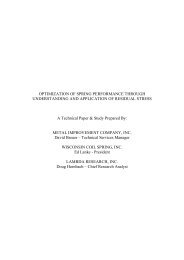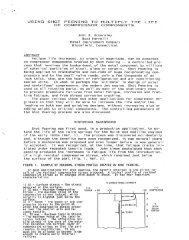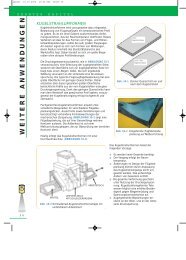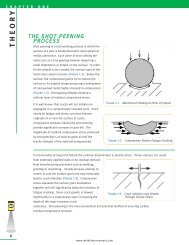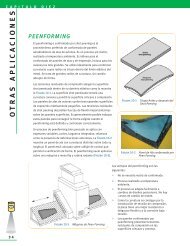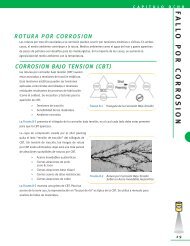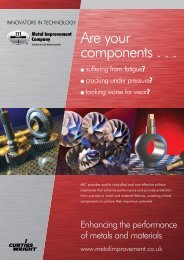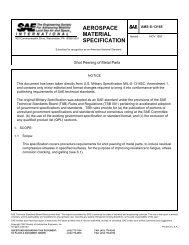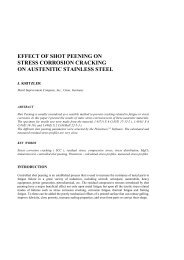MIC Green Book
MIC Green Book
MIC Green Book
You also want an ePaper? Increase the reach of your titles
YUMPU automatically turns print PDFs into web optimized ePapers that Google loves.
C H A P T E R T H R E E<br />
M ANUFACTURING PROCESSES<br />
14<br />
EFFECT ON FATIGUE LIFE<br />
Manufacturing processes have significant effects on fatigue properties of metal parts. The effects can be<br />
either detrimental or beneficial. Detrimental processes include welding, grinding, abusive machining, metal<br />
forming, etc. These processes leave the surface in residual tension. The summation of residual tensile<br />
stress and applied loading stress accelerates fatigue failure as shown in Figure 1-6.<br />
Beneficial manufacturing processes include surface hardening as it induces some residual compressive<br />
stress into the surface. Honing, polishing and burnishing are surface enhancing processes that remove<br />
defects and stress raisers from manufacturing operations. Surface rolling induces compressive stress but is<br />
primarily limited to cylindrical geometries. Shot peening has no geometry limitations and produces results<br />
that are usually the most economical.<br />
The effect of residual stress on fatigue life is demonstrated in the following example. A test by an airframe<br />
manufacturer on a wing fitting showed the initiation of a crack at just 60% of predicted life. The flaw was<br />
removed and the same area of the part shot peened. The fitting was then fatigue tested to over 300% life<br />
without further cracking even with reduced cross sectional thickness [Ref 3.1].<br />
WELDING<br />
The residual tensile stress from welding is created because the weld consumable is applied in its molten state.<br />
This is its hottest, most expanded state. It then bonds to the base material, which is much cooler. The weld<br />
cools rapidly and attempts to shrink during the cooling. Because it has already bonded to the cooler, stronger<br />
base material it is unable to shrink. The net result is a weld that is essentially being "stretched" by the base<br />
material. The heat affected zone is usually most affected by the residual stress and hence where failure will<br />
usually occur. Inconsistency in the weld<br />
filler material, chemistry, weld geometry,<br />
porosity, etc., act as stress risers for<br />
residual and applied tensile stress to<br />
initiate fatigue failure.<br />
As shown in Figure 3-1, shot peening is<br />
extremely beneficial in reversing the<br />
residual stress from welding that tends to<br />
cause failure in the heat affected zone<br />
from a tensile to a compressive state.<br />
Figure 3-1 demonstrates a number of<br />
interesting changes in residual stress<br />
from welding, thermal stress relieving<br />
and shot peening [Ref 3.2]. Tensile<br />
stresses generated from welding are<br />
Figure 3-1 Residual Stresses from Welding<br />
additive with applied load stresses. This combined stress will accelerate failure at welded connections.<br />
When the weld is stress relieved at 1150 °F (620 °C) for one hour, the tensile stress is reduced to almost zero.<br />
This reduction of tensile stress will result in improved fatigue properties.<br />
www.metalimprovement.com



